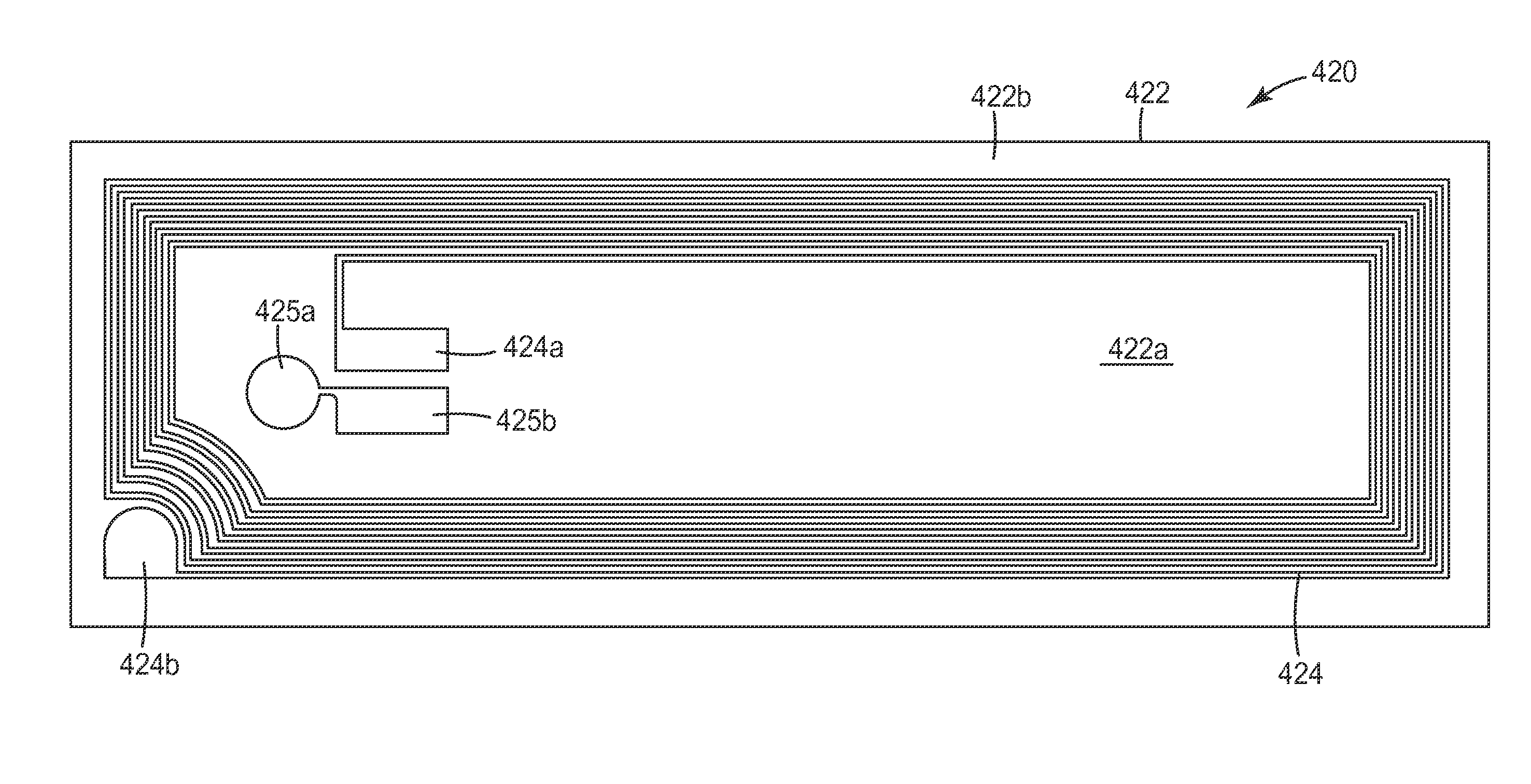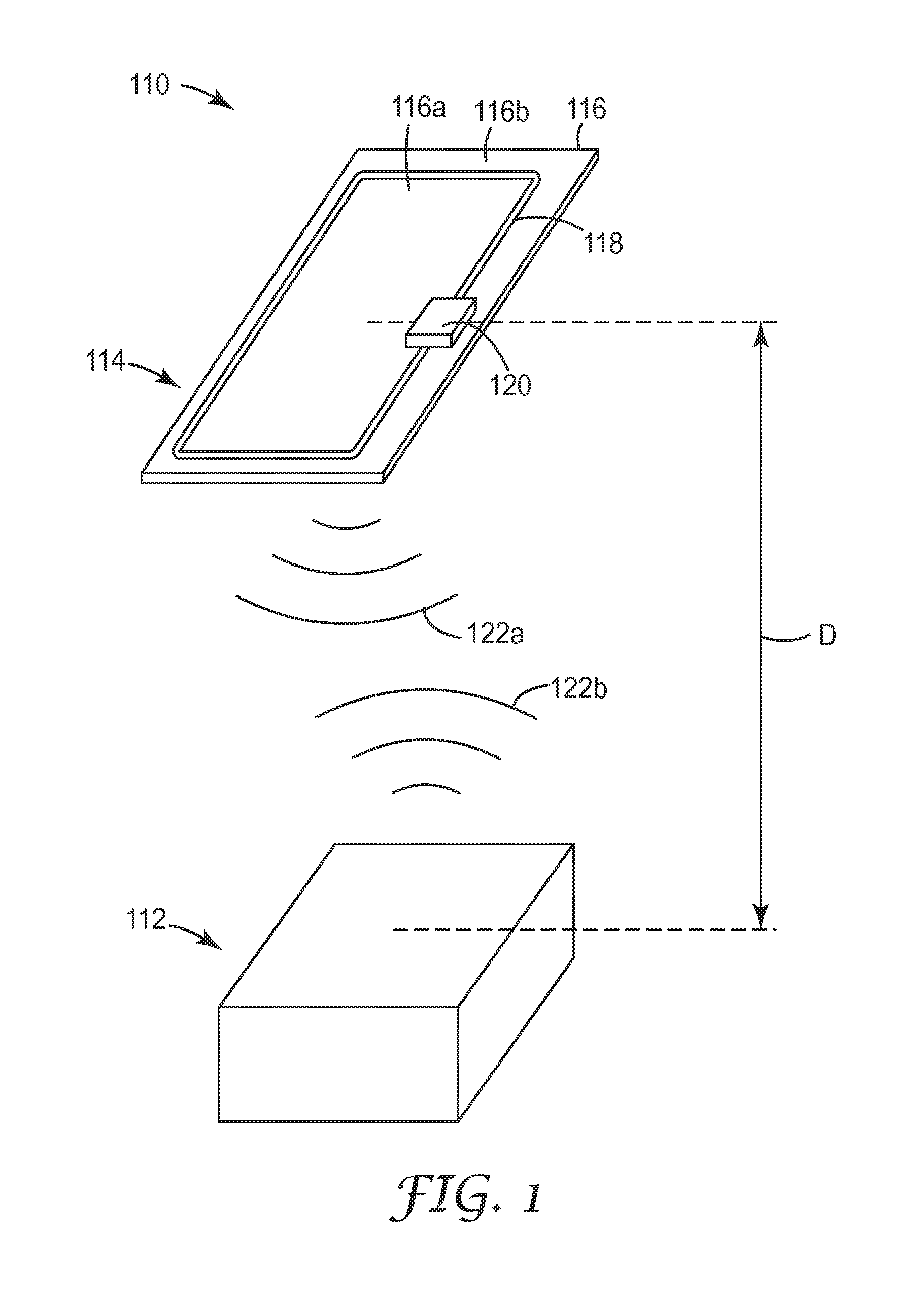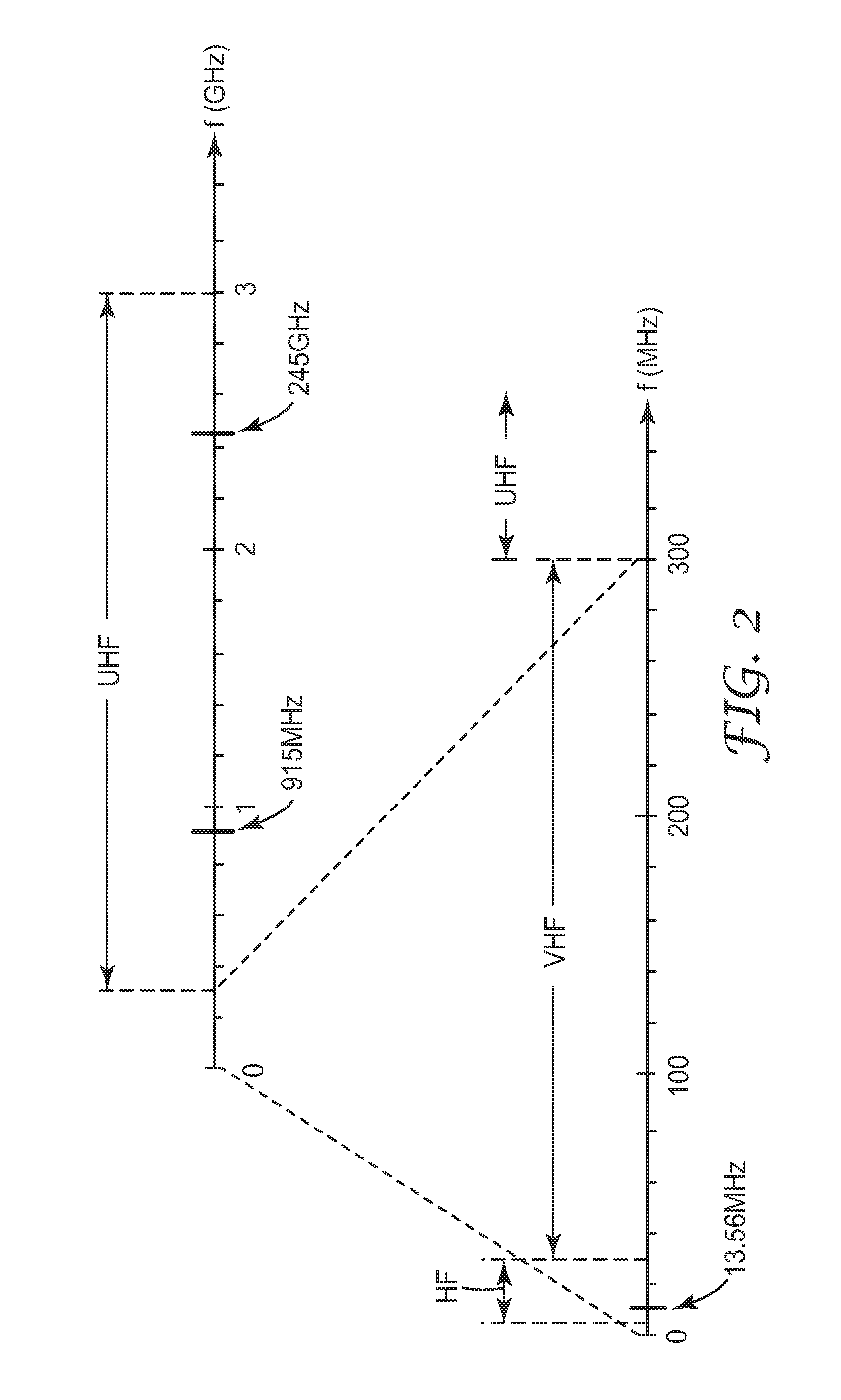Transparent Micropatterned RFID Antenna and Articles Incorporating Same
a technology of transparent micro-patterned rfid antennas and antennas, which is applied in the structural form of resonant antennas, instruments, radiating elements, etc., can solve the problems of not being useful in other rfid devices, unsuitable conductors for antennas in rfid applications, and unknown and uncertain suitability of conductors for certain specific applications
- Summary
- Abstract
- Description
- Claims
- Application Information
AI Technical Summary
Benefits of technology
Problems solved by technology
Method used
Image
Examples
examples 2-45
[0095]RFID antennas were fabricated using high transparency micropatterned conductors. A variety of antenna designs were used, including antennas adapted for use at 13.56 MHz and antennas adapted for use at 915 MHz. Different micropatterned conductors were also used, the differences including differences in trace width, trace pitch, trace thickness, and open area fraction. For each RFID antenna, the DC resistance of the antenna was measured with a digital multimeter (Fluke 73III Multimeter, Fluke Corporation, USA), and an RFID integrated circuit was then connected to the antenna. The RFID device so fabricated was then evaluated with a conventional RFID reader to determine if a signal could be observed when the RFID device was positioned directly against the RFID reader. If a signal was observed, the distance between the RFID reader and RFID device was then progressively increased until a signal was no longer observed, that distance being recorded as the value Dmax discussed above in...
PUM
| Property | Measurement | Unit |
|---|---|---|
| frequency | aaaaa | aaaaa |
| width | aaaaa | aaaaa |
| thickness | aaaaa | aaaaa |
Abstract
Description
Claims
Application Information
 Login to View More
Login to View More - R&D
- Intellectual Property
- Life Sciences
- Materials
- Tech Scout
- Unparalleled Data Quality
- Higher Quality Content
- 60% Fewer Hallucinations
Browse by: Latest US Patents, China's latest patents, Technical Efficacy Thesaurus, Application Domain, Technology Topic, Popular Technical Reports.
© 2025 PatSnap. All rights reserved.Legal|Privacy policy|Modern Slavery Act Transparency Statement|Sitemap|About US| Contact US: help@patsnap.com



